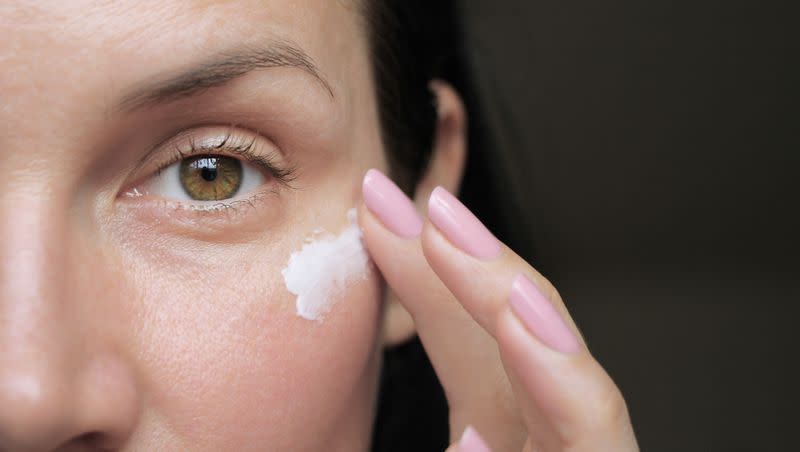What dermatologists say about eye creams

When I started high school, I began wearing makeup. Each day I put on concealer, mascara and did my eyebrows. Granted, I did not put on a lot of makeup, but I still tried to hide what I believed to be flawed features, like pimples or the dark circles under my eyes.
After growing up, understanding more about skin care and having a busier schedule, I don’t wear makeup every day. Instead, I sometimes let my “makeup” be different over-the-counter skin care products. My favorite is an eye cream.
With much less acne as an adult, my main use of concealer would be my dark circles. Without concealer, on bad days it can look like I haven’t slept in months (which might be true). Eye creams are said to help hydrate and lighten the dark patches under your eyes. Why wouldn’t I want to try that?
Turns out, dermatologists find that most over-the-counter eye creams don’t work, per The New York Times.
Daniel Friedmann, a dermatologist and clinical research director at Westlake Dermatology in Austin, Texas said to The New York Times that most eye creams haven’t undergone “any real intensive lab or clinical testing,” so they’re often ineffective.
What causes dark circles?
Dark circles under the eyes can occur due to various factors, with aging being one of the primary causes. As individuals age, the skin beneath the eyes tends to lose elasticity and thins out, making the blood vessels beneath the skin more prominent.
The blood vessels can then lead to a darkened appearance under the eyes. Additionally, hollowed areas known as tear troughs may form, casting shadows that cause the appearance of under-eye puffiness, according to Cleveland Clinic.
Cleveland Clinic also shares other common causes:
Genetics: Dark circles under your eyes may run in families.
Dermatitis: Conditions like eczema and contact dermatitis can cause blood vessels under your eyes to dilate and become more visible.
Rubbing your eyes: Scratching or rubbing your eyes can lead to swelling and broken blood vessels under the eyes.
Lack of sleep: Poor sleeping habits can cause the skin under your eyes to appear pale, making blood vessels more visible.
Hyperpigmentation: Sun exposure triggers increased melanin production, leading to darkening of the skin.
Dehydration: Insufficient water intake can result in dull-looking skin under the eyes.
Lifestyle factors: Stress, excessive alcohol consumption and smoking are additional factors contributing to dark circles under the eyes.
Why don’t eye creams work?
Dr. Ronald Moy, a dermatologist and plastic surgeon in Beverly Hills, California, said to The New York Times, “I think none of them work. I’ve never personally seen any improvement.”
Furthermore, Ivy Lee, a dermatologist in Pasadena, California, said ingredients found in eye creams and serums, such as hyaluronic acid, vitamin C, antioxidants or caffeine, may help reduce the appearance of dark circles. However, they are considered temporary solutions and do not offer a permanent solution for their elimination, per The New York Times.
Moy said eye creams are really just “hope in a bottle,” per The New York Times.
How can I get rid of the dark circles under my eyes then?
The New York Times compiled a list from dermatologists of what actually brightens or gets rid of dark circles.
Chemical peels
Regular chemical peels with ingredients like retinol or glycolic acid prevents dark circles from worsening.
Fillers
Hyaluronic acid fillers, often combined with lasers, can enhance under-eye skin volume, reducing the visibility of dark circles. However, fillers carry some risks, such as temporary bruising or swelling, and rarely, they may cause blockages in the retina’s blood supply, leading to blindness.
Lasers
Fractional laser resurfacing, like Fraxel, can eliminate brownish discoloration by removing the pigmented skin layer. The Nd:YAG laser targets blood vessels to reduce purple or blue discoloration, while fractional carbon dioxide lasers thicken the skin under the eyes.
Microneedling
This procedure can stimulate collagen production by creating small wounds in the skin, leading to tighter and smoother under-eye skin.
Surgery
Doctors can surgically remove excess fat and skin under the eyes to address dark circles caused by under-eye bags. Surgery is typically a last resort for patients who haven’t seen improvement with other treatments.
What if I don’t want expensive treatments?
Do not feel like you have to go through surgery to get rid of the dark circles under your eyes. Even though the solution might be more temporary than permanent, eye creams are not bad, according to Healthline.
Try using a specially designed cream that is safe around the delicate area of your eyes. Look for ingredients such as retinol, vitamin C, peptides or sunscreen. Again, they are not long-term solutions but, depending on the person, they can sometimes help reduce wrinkles, discoloration and puffiness, per Healthline.
Related

